Django 返回json數據的實現示例
在一個網站,大量數據的前后端交互,JSON是最好的傳遞數據方式了。在Django中,使用JSON傳輸數據,有兩種方式,一種是使用Python的JSON包,一種是使用Django的JsonResponse
方法一:使用Python的JSON包
from django.shortcuts import HttpResponseimport jsondef testjson(request): data={ ’patient_name’: ’張三’, ’age’: ’25’, ’patient_id’: ’19000347’, ’診斷’: ’上呼吸道感染’, } return HttpResponse(json.dumps(data))
我們暫且把data看成是從數據庫取出來的數據,使用瀏覽器訪問一下testjson

這不是亂碼,這是中文在內存中的二進制表現形式而已,使用JSON的轉換工具可以看到中文。
我們看一下Response Headers響應頭,其中的Content-Type是text/html,我明明傳的是JSON啊,怎么會變成字符串類型了?這是因為我們沒有告訴瀏覽器,我們要傳一個JSON數據,那么,怎么告訴瀏覽器呢?
def testjson(request): data={ ’patient_name’: ’張三’, ’age’: ’25’, ’patient_id’: ’19000347’, ’診斷’: ’上呼吸道感染’, } return HttpResponse(json.dumps(data), content_type=’application/json’)
再訪問網頁:
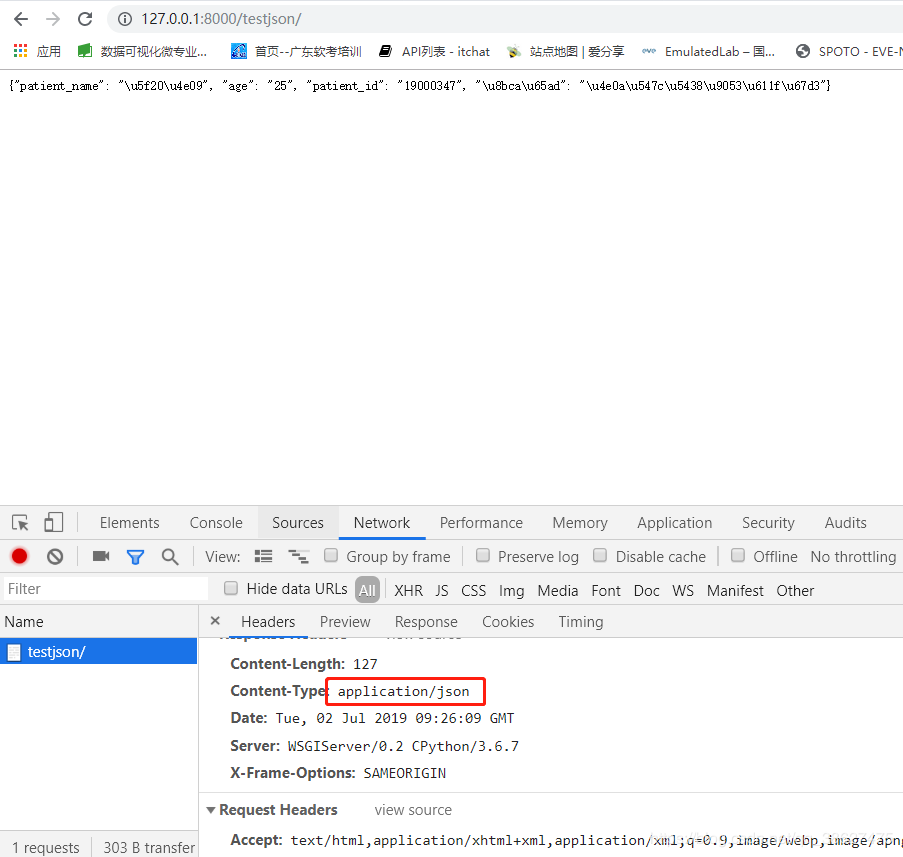
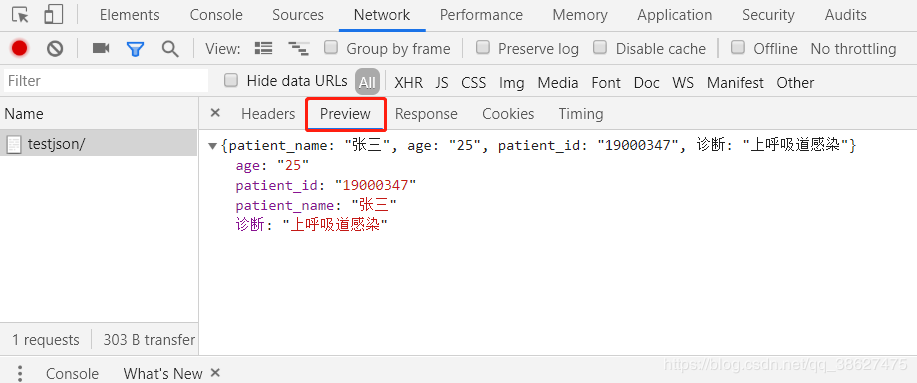
現在是傳輸JSON了,在Preview中可以正常顯示出來。
方法二:使用JsonResponse進行傳輸
def testjson(request): data={ ’patient_name’: ’張三’, ’age’: ’25’, ’patient_id’: ’19000347’, ’診斷’: ’上呼吸道感染’, } return JsonResponse(data)
訪問網頁:
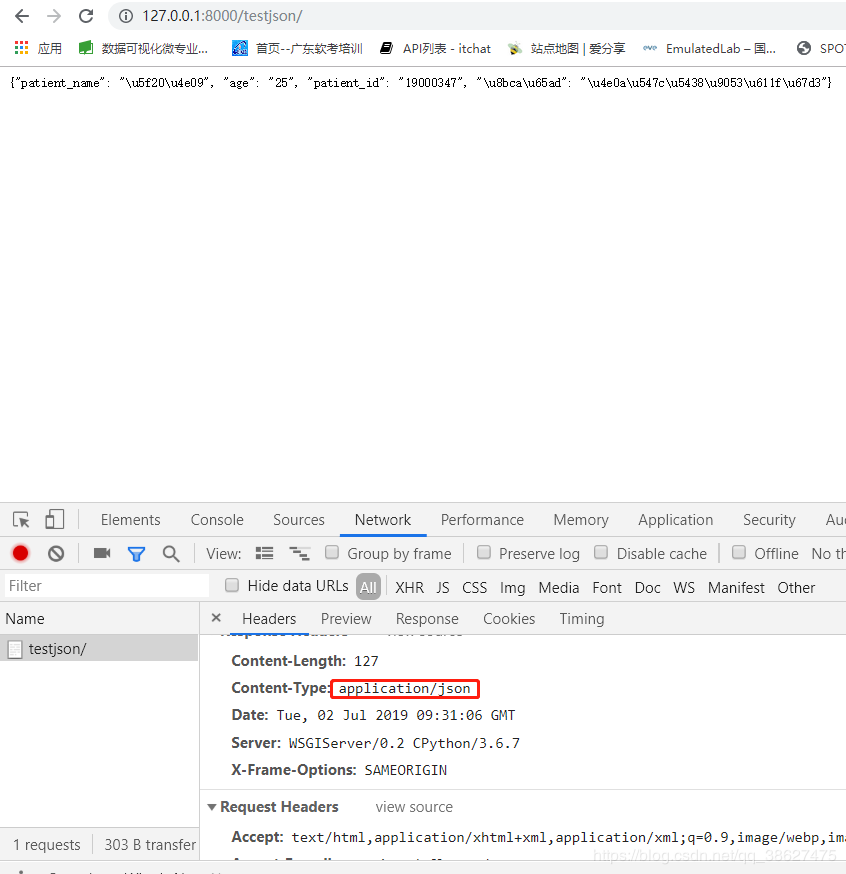

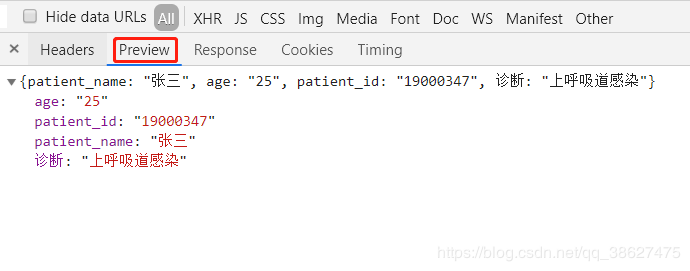
JsonResponse的源碼
class JsonResponse(HttpResponse): ''' An HTTP response class that consumes data to be serialized to JSON. :param data: Data to be dumped into json. By default only ``dict`` objects are allowed to be passed due to a security flaw before EcmaScript 5. See the ``safe`` parameter for more information. :param encoder: Should be a json encoder class. Defaults to ``django.core.serializers.json.DjangoJSONEncoder``. :param safe: Controls if only ``dict`` objects may be serialized. Defaults to ``True``. :param json_dumps_params: A dictionary of kwargs passed to json.dumps(). ''' def __init__(self, data, encoder=DjangoJSONEncoder, safe=True, json_dumps_params=None, **kwargs): if safe and not isinstance(data, dict): raise TypeError(’In order to allow non-dict objects to be serialized set the ’’safe parameter to False.’ ) if json_dumps_params is None: json_dumps_params = {} kwargs.setdefault(’content_type’, ’application/json’) data = json.dumps(data, cls=encoder, **json_dumps_params) super().__init__(content=data, **kwargs)
其內部也是通過json.dumps來把數據轉換為JSON的,其還可以轉換為list類型。我們再來改一下testjson
def testjson(request):listdata = ['張三', '25', '19000347', '上呼吸道感染']return JsonResponse(listdata)
程序報錯了

報錯為:In order to allow non-dict objects to be serialized set the safe parameter to False,它的意思是轉換為一個非字典的類型時,safe參數要設置為False,還記得上面JsonResponse的原碼嗎?其中就有

代碼修改為:
def testjson(request): listdata = ['張三', '25', '19000347', '上呼吸道感染'] return JsonResponse(listdata, safe=False)
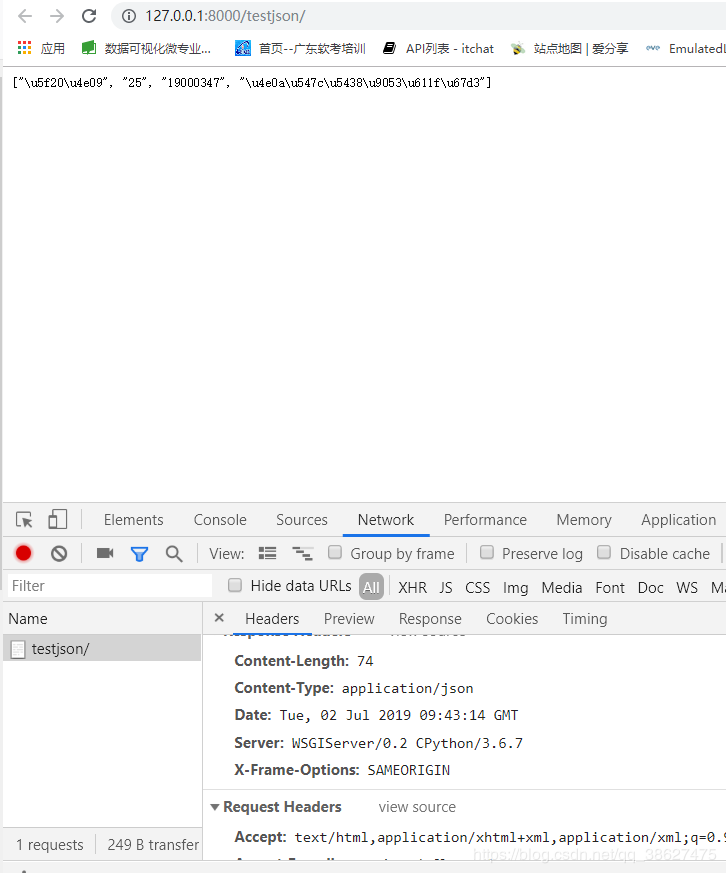
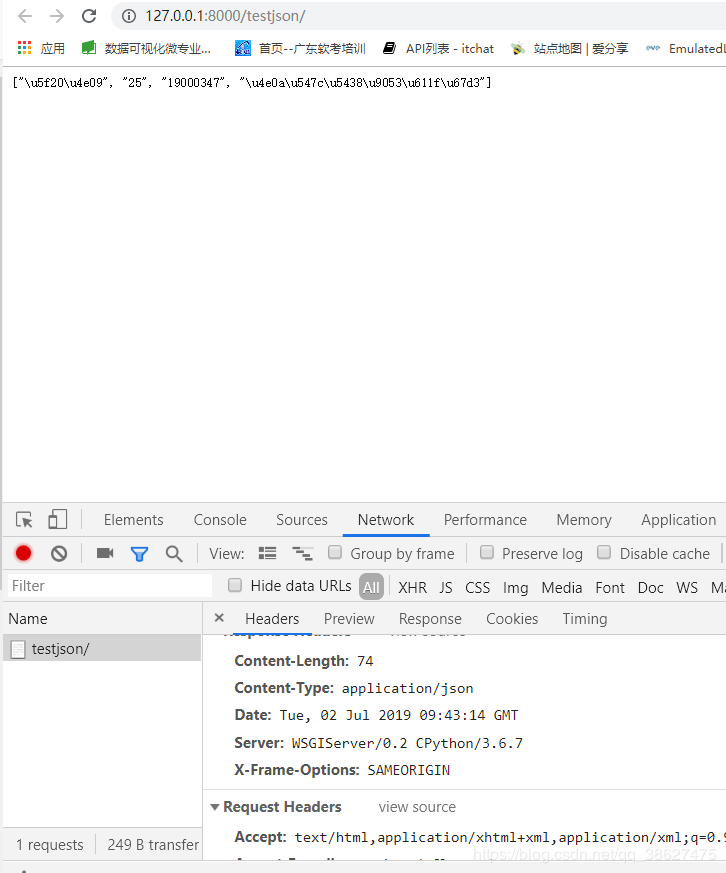
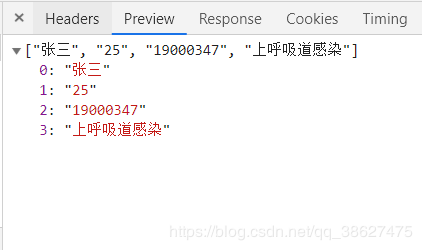
這有什么用
有時我們從數據庫取出來的數據,很多是列表類型的,特別是用cx_Oracle包在Oracle數據庫取出來的數據,其不支持直接字典的輸出,輸出就是一個list,這時我們使用JsonResponse(data, safe=False)就可以直接輸換為Json,發送到前端了。
到此這篇關于Django 返回json數據的實現示例的文章就介紹到這了,更多相關Django返回json 內容請搜索好吧啦網以前的文章或繼續瀏覽下面的相關文章希望大家以后多多支持好吧啦網!
相關文章:

 網公網安備
網公網安備